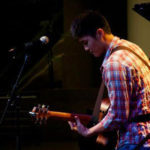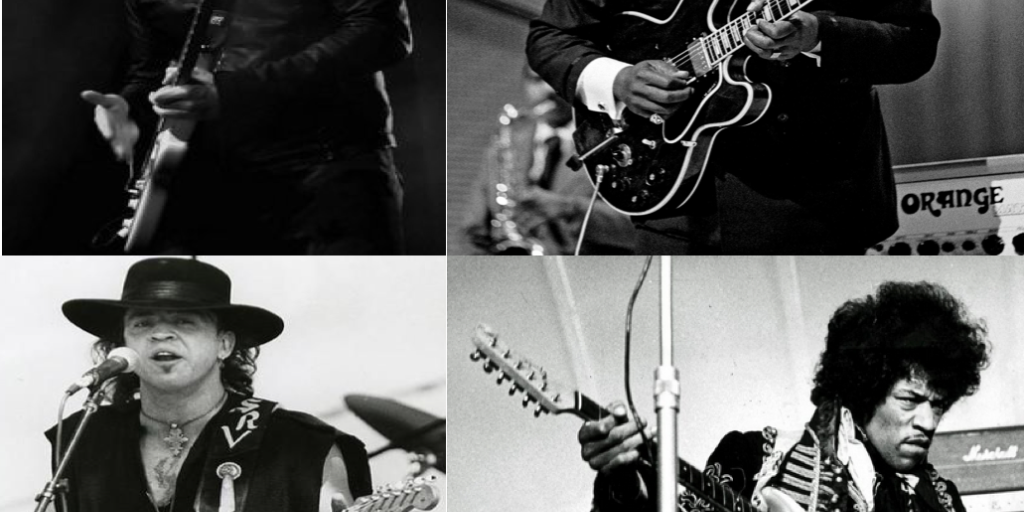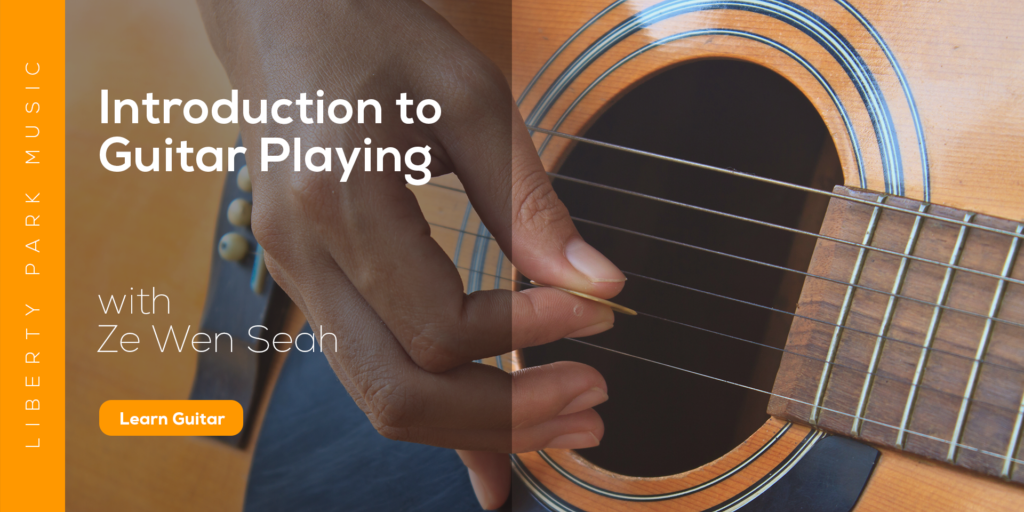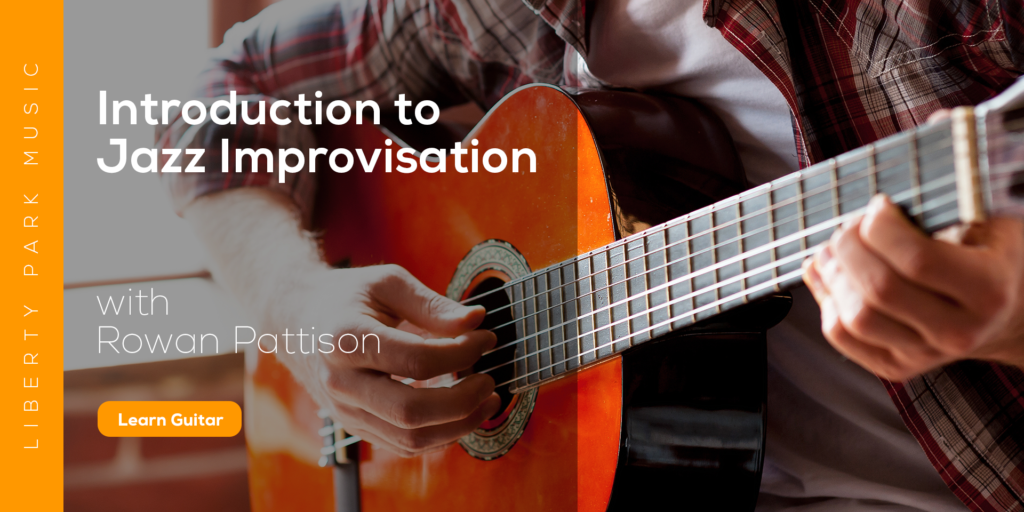
One of the best ways to improve your guitar playing is to imitate your favorite guitarists, and without a doubt, one of the most influential guitarists of our generation is John Mayer. Many have attempted to mimic Mayer’s style by buying the right amps and pedals, but the key ingredient to sounding like Mayer is through technique.
Mayer himself can attribute much of his techniques to imitating blues and blues-rock legends like Stevie Ray Vaughan, B.B. King, and Jimi Hendrix. This is why you can hear a little bit of B.B. King in Mayer’s “Gravity,” or a little bit of Stevie Ray Vaughan in “Good Love Is On The Way.”
We’ve already covered the types of guitars, amps, and pedals that Mayer uses for his tone, so now let’s explore the most important aspect of his style -- his commonly used techniques.
Techniques
In this exploration of techniques that are commonly used by John Mayer, we’ll first identify the technique, then breakdown how the technique is executed, and lastly we’ll look at some examples of how Mayer employs these techniques in his performances.
Fretting notes with the left thumb
The first technique used by Mayer, fretting notes with the left thumb, consists of simply using the thumb of your left hand to fret notes, instead of keeping it behind the neck where it usually sits. Though this technique is considered by classical guitarists to be “bad technique,” it is useful when playing barre chords with the root note on the sixth string. Instead of playing your regular barre chords, the shape will be altered slightly so the sixth string is now fretted with your thumb.
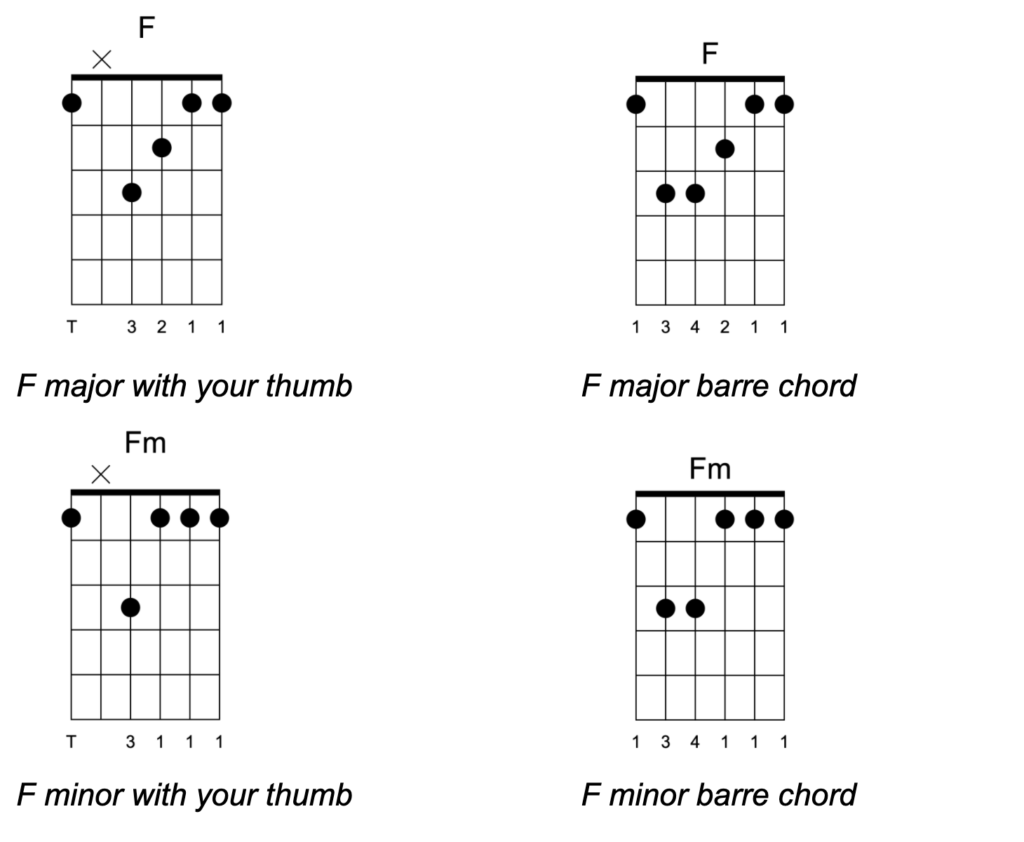
Playing your barre chords with your thumb will actually free up your pinky, which allows you to add ornamentation notes with that free finger. Since the popularization of this technique by Hendrix, this technique is now widely used by guitarists across all genres of music.
You can watch John Mayer use this technique in this live version of Tom Petty’s “Free Fallin’.” During the parts where the camera focuses on his guitar, notice how his thumb is always pressing down on the sixth string.
Licks over chords
One technique that made Jimi Hendrix stand out amongst his contemporaries was his ability to blend his chords with single-note lines or “licks.” While Hendrix is no longer with us, one of his most iconic techniques continues to live on in guitarists like John Mayer.
To play licks over chords, play the chord and then outline the notes of the chord by playing single-notes in the corresponding pentatonic scale. For example, instead of playing an A-major chord throughout an entire bar, play the chord on the first beat, then play around with notes within the A major pentatonic scale to outline the chord. This technique is especially effective in a full-band scenario, as the idea behind the technique is that you don’t necessarily have to always play the full chord to get the sound of the chord. Many of the other instruments within the band will already be playing notes within the chord, so you’re actually free to play with notes from the corresponding pentatonic scale or arpeggio. It can also be applied in an acoustic setting, but it tends to either be a hit or miss as sometimes it does feel like there are harmonic elements missing.
The application of this technique can be heard in several of Mayer’s songs, including “Another Kind of Green,” “Slow Dancing In A Burning Room,” and his cover of Hendrix’s “Bold As Love.” Mayer using licks over chords can also be seen in this video where he performs “Something Like Olivia” live with his acoustic guitar.
Double stops
Double stops are similar to the previous technique, whereby they work on the assumption that you don’t always have to play a full chord. Double stops is a technique where you simply play two notes at once, regardless of the interval between the two notes. If we’re getting specific, Mayer tends to use double stops with a sixth interval between the two notes, and this can be heard in the guitar solo of “Your Body Is A Wonderland.”
Of course, he also uses double stops with different intervals as well, and this technique can be heard throughout all his songs, from the intro riff of “Slow Dancing In A Burning Room” to the recurring riff throughout “Vultures.”
Check out this video of Mayer playing an intro to “Slow Dancing In A Burning Room” to see him employ double stops.
Slides
Slides are commonly used amongst guitarists across all genres, and they can be used for single notes and entire chords. The slide technique simply has you sliding up or down the string while fretting the notes with your fingers. This results in a note that slides up or down in pitch, depending on the direction you’re sliding.
Mayer uses this technique often, and he can often be seen sliding up and down one or two strings, effectively playing the guitar as if it’s a sitar or other stringed instrument. You can hear him using slides in the solos of “Gravity” and “Waiting On The World To Change.” He can also be heard using a lot of single-string slides on the intro to this live performance of “Gravity.”
Hammer-ons and Pull-offs
I like to think of hammer-ons and pull-offs as sibling techniques, as the method to execute the two techniques are similar, except pull-offs are done in reverse of hammer-ons. Hammer-ons and pull-offs are fundamental techniques used across a wide range of genres. They give you some interesting phrasing options, and they can also be used to play blazing fast licks.
Hammer-ons, like its name implies, is when you get a note to sound by hammering your finger onto the fret instead of picking the string with your left hand. Try picking the note on the first fret of the sixth string, then hammer your ring finger onto the third fret. That’s essentially what a hammer-on is.
A pull-off is similar to a hammer-on, just done in reverse. For example, with a pull-off, you could be playing the third fret of the sixth string with your index finger, then without picking the string again, you flick your index finger off the third fret to cause the open string to ring. You can check out this video lesson conducted by yours truly to get an idea of how to execute the technique cleanly.
Hammer-ons and pull-offs are techniques that Mayer uses across almost all of his songs, and you’d be able to see him apply them by watching almost any one of his live videos. Here is a live video of him playing “Good Love Is On The Way” with the John Mayer Trio. The entire intro lick relies on using pull-offs; both hammer-ons and pull-offs are sprinkled throughout the entire song.
Bends
The bends. If there was a single technique that defined the Blues genre, I’d nominate the string bending technique. This is a technique that has been used since the early days of the Blues, back when bluesmen were travelling musicians that mainly came from the Mississippi Delta, and they all had some tragic life story to share through the medium of the twelve-bar Blues. String bending can be heard in recordings of some of the founding bluesmen like Robert Johnson.
String bends are when the pitch of a played note is pushed up by simply bending the string upwards or downwards, which causes a higher tension on the string, resulting in a note that slides up in pitch. The pitch of the note can be bent from a half-step, all the way to two whole-steps up in pitch. It is also possible to perform a pre-bend technique, where the string is bent first without playing the note, then the note is played and the bend is released, resulting in a note that slides down in pitch.
Just like all the Blues musicians that came before and after him, Mayer uses a lot of bends in his playing, and it can be heard throughout all of his studio recordings, as well as his live performances. Check out Mayer’s version of Bill Withers’ “Ain’t No Sunshine,” especially the solo that starts at 1:27. You will see that he uses a lot of bends to get his signature phrasing style.
Grace notes
Grace notes are a very interesting method of ornamenting your playing. A grace note is a note that is played right before a target note, but an important thing to note is that the grace note doesn’t actually have a rhythmic time value. It’s just a note that you pass by quickly to get to your target note. In standard notation, grace notes look like this:
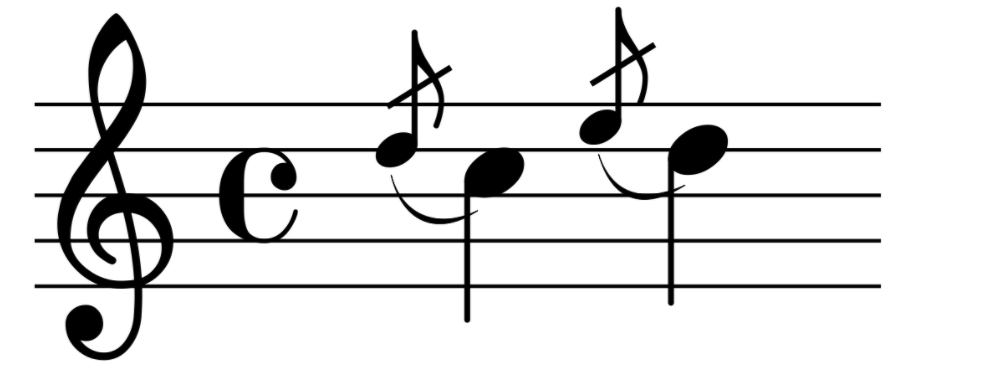
As you can see in this image, the D note that comes before the C note is a grace note. To play this, you’ll have to quickly slide down from the D note to the C note, and hold the C note for one beat.
Grace notes are used regularly in guitar solos as they’re a great way to add unique phrasing and ornamentation to your playing. They’re often paired with bends, slides, hammer-ons, or pull-offs. Like the string bending technique, Mayer uses this technique a lot in his solos. Almost all of his solos feature grace notes, but if you’d like to see a specific solo, check out our video lesson on the solo for “Rosie.” While following along with the TABs in the video lesson, check out the third bar of the solo where there is a 64th note. Technically, that note should be a grace note, but I couldn’t figure out a way to add in grace notes in my notation app, which is why I wrote it as a 64th note. Also notice how that grace note is paired with a slide technique.
Raking
Raking is an aggressive sounding blues technique that adds percussive pops to a single note. The technique is used when you’re looking to play a single note, but you’d like to make it sound fuller and more aggressive. This can be accomplished by fretting the note that should be played, while muting all the other strings with the free fingers of your left hand, then aggressively strumming all the strings with your right hand. This will result in a really loud, percussive played note. In TABs, rakes are notated with an “X,” which is displayed in the following image:
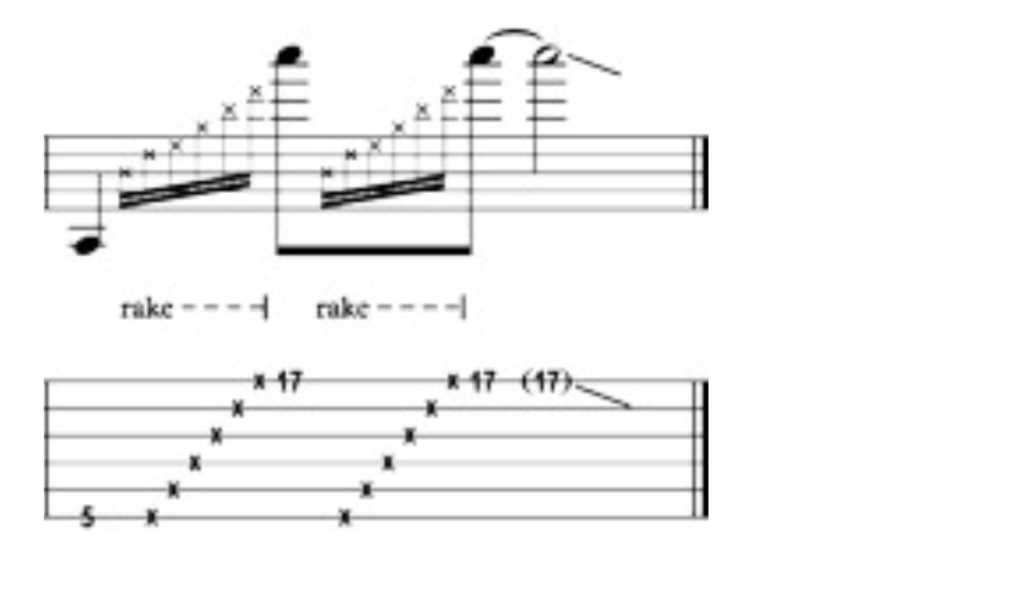
Rakes are another technique used very frequently in blues guitar, and the most notable guitarist to use rakes is arguably Stevie Ray Vaughan as it helps him get that aggressive tone. Check out “Pride And Joy” to hear him use it throughout the song.
Mayer also uses rakes quite a bit, and he can be seen using it a lot in his songs with the John Mayer Trio. Listen to “Who Did You Think I Was” to hear him use a rake technique throughout the entire verse riff. For an example in a guitar solo, listen to the opening notes of the solo in “Bold As Love” (you can also hear the rake before each note). It’s very hard to make your notes sound that aggressive without using rakes.
Vibrato
Vibrato is an ornamentation technique that mimics the vibrato found in singers. The technique behind a vibrato is similar to the bend technique, just that you don’t bend the string as far when doing a vibrato. Arguably the guitarist with the most iconic vibrato is B.B. King, and examples of his iconic vibrato can literally be heard in every one of his recordings.
Seeing as B.B. King is a huge influence on John Mayer, Mayer also tends to use a lot of vibrato in his playing. Like the bends, rakes, and grace notes, vibratos are another technique that is used for almost every guitar solo from Mayer. Vibratos are also often paired with a bend technique, and this can be heard in the intro line of “Gravity.” Going back to that live video of “Ain’t No Sunshine,” the very first note of the solo has a long, sustained vibrato.
Slap and Slap/strum
As an acoustic guitarist, one of Mayer’s defining techniques is his percussive slap, and slap/strum technique that can be heard in songs like “Heart Of Life,” “Stop This Train,” “Who Says,” “Why Georgia,” “Neon,” and many more. This percussive technique is actually a really common fingerstyle technique, but it was made massively popular by Mayer with the release of “Neon.” The reason why this technique is so effective is because very often, when dealing with only an acoustic guitar, the lack of a rhythm backing can leave the music feeling like it lacks a pulse. With the slap and slap/strum technique, you now have a percussive sound that keeps that pulse going. This technique is usually executed on the second and fourth count of each bar, when a drummer would hit a snare drum.
The slap technique is done by slapping the side of your right thumb against the strings, which results in a percussive click sound. The slap/strum technique is similar, just that now it’s paired with a strum with the other fingers of your right hand. Watch any live performance of Mayer playing any of the above mentioned songs to see how he does that technique.
Fingerstyle Instead of Pick
Possibly the technique that most defines Mayer’s sound is his decision to use his fingers to pluck his strings rather than using a pick (plectrum). Of course, Mayer does use a pick for some of his songs and performances, but often, you will see him use his fingers instead. There are a few positive outcomes when using your fingers instead of a pick. First, you tend to have more control over the tone of your guitar when using your fingers, and there are more sounds that you can get. For example, there is a difference in tone when you use your nail to pluck the string, compared to when using the flesh of your finger. You also have the option to snap the string against the fretboard when using your fingers, and doing that will result in a really loud and explosive note. Using your fingers to pick notes will also give you the option to combine chords and melodies at the same time, which you can see on display in this performance by Mayer.
With your fingers, you also have five different objects to strike the strings, as compared to just one when using a pick. However, there are some downsides to using your fingers. First of all, it’s just not possible to play as fast with your fingers, compared to using a pick. You will also notice Mayer, when it’s time to play a fast lick or solo, tends to switch over to using a pick. Of course, there will be many guitarists out there that will disagree with me, and there are guitarists like Wes Montgomery who play blazingly fast, and exclusively use their fingers. Another downside I find with fingerstyle is that it’s technically harder to maintain a consistent sound with your fingers. Generally, I find it easier to get a consistent tone when using a pick, which would make sense because a pick is more or less the same material throughout. With your fingers though, just plucking with the tip of your finger versus the pad of your finger will produce a different sound.
Obviously there are pros and cons for using your fingers or using a pick, but definitely the best way to balance this out is to use a combination of both, which is something you will see Mayer do quite often during his live performances. To get an idea of how this can be accomplished, check out our article on fingerstyle versus picks.
Combination of techniques
It’s easy to go through this list of techniques, then go through some online lessons (from Liberty Park Music or some other website) to pick them up, but the hard part really isn’t learning the techniques in isolation. Rather, the hard part is putting these techniques in musical context, and combining and chaining these techniques together. When observing guitarists that play at a high level, you will notice that they’re often blending techniques together to get a specific phrasing or ornamentation. The same is true in Mayer’s case; he’s often combining bends with vibratos, slides or hammer-ons/pull-offs with grace notes, rakes with slaps, and many more combinations.
The best way to learn how to combine some of these techniques together is to learn songs that use them in different combinations.
Letting Go of technique
One final note I’d like to add about technique is the importance of moving beyond technique and letting it go. While technique is everything when it comes to any kind of performance art, technique should also be the last thing on your mind when actually performing. You will end up making more technical mistakes when you’re too focused on technique. Ask yourself this, do you think about how you should move your mouth and tongue when you’re stringing sentences together? It’s very unlikely that you do, and the reason why you don’t think about it is because you’ve already mastered the ability to speak (hopefully). You’ve let go the technique of making those sounds, and instead now focus on the idea you’re trying to convey. Now try speaking while paying extra attention to the technique of speaking. You will find that you may fumble on your words or fail to string your sentences as fluidly. The act of focusing on your technique can actually make it harder to perform.
The same idea of letting go of your technique should be applied whenever playing your guitar. Treat the act of picking up new techniques as a separate exercise. Whenever I practice techniques, I focus on them and try to ensure that I am doing them efficiently and perfectly. However, when doing these techniques in a musical context, I very rarely actually think about the technique. Rather, you should try focusing on the overall phrasing and sound that you’re going for as they will dictate what kind of techniques you should use to achieve the phrasing. Of course, the best way to let go of technique is to practice it to the point where you don’t have to think about it, and the most fun way of practicing these techniques is to do them in context of a song. With that in mind, stay tuned for our following articles and lessons on John Mayer’s songs!
About the Author: Ze
Ze first began his journey playing original music and top 40s pop tunes around the country's popular venues. Eventually, through the music of John Mayer, he found a strong attraction to blues music. Ze has years of experience teaching beginners and intermediate guitarists. Currently with Liberty Park Music he is teaching Introduction to Guitar Playing for Complete Beginners, Rhythm Guitar to learn about strumming, chords and more, Guitar Essentials as a fast-track review course, and lots of Song Lessons on pop and rock hits.
Learn with LPM
If you are looking to feel comfortable with playing basic major and minor chords, power chords, and apply different strumming techniques to your practices with Ze, check out his course called Rhythm Guitar

